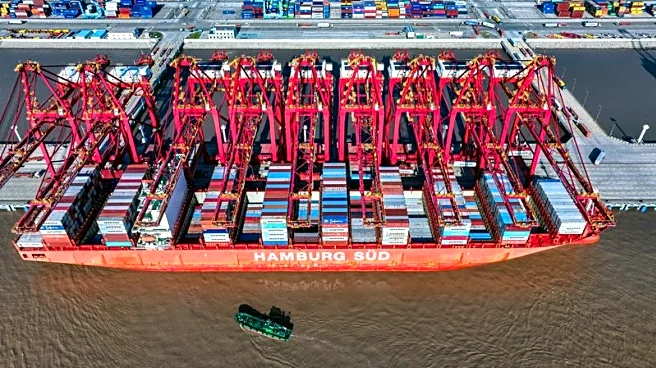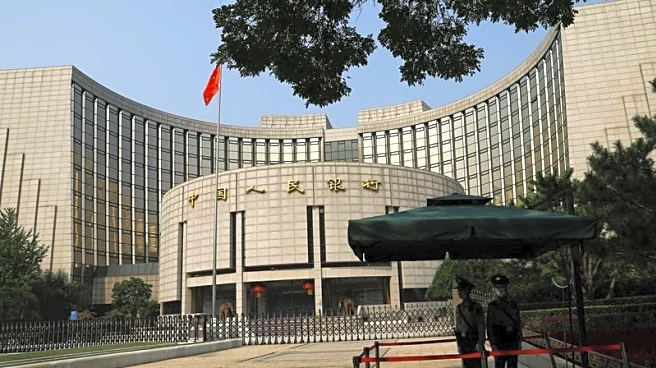What's Happening?
China did not import any soybeans from the United States in September, marking the first time since November 2018 that shipments fell to zero. This development comes amid a prolonged trade dispute between
the U.S. and China, with high tariffs imposed by China on U.S. imports contributing to the decline. According to data from China's General Administration of Customs, imports from the U.S. dropped from 1.7 million metric tons a year earlier to zero. Meanwhile, shipments from South America surged, with Brazil's arrivals increasing by 29.9% year-on-year to 10.96 million tons, and Argentina's shipments rising by 91.5% to 1.17 million tons. China's total soybean imports reached 12.87 million metric tons in September, the second-highest level on record.
Why It's Important?
The halt in U.S. soybean imports by China is significant as it highlights the ongoing impact of trade tensions between the two countries. U.S. farmers face potential financial losses as Chinese buyers continue to source soybeans from South America. This shift in trade patterns could lead to billions in losses for U.S. agriculture if the situation persists. Additionally, China may encounter a supply gap early next year before Brazil's new crops are available, potentially affecting its domestic market. The trade negotiations between Beijing and Washington are crucial in resolving these issues, with President Trump expressing optimism about reaching a soybean deal.
What's Next?
The window for U.S. soybean purchases is closing as Chinese buyers secure shipments through November from Brazil and Argentina. Without a breakthrough in trade talks, U.S. farmers could continue to face economic challenges. Meanwhile, China may experience a soybean supply gap between February and April next year if no trade deal is reached. The ongoing negotiations between the U.S. and China are critical in determining the future of soybean trade and resolving the current impasse.
Beyond the Headlines
The trade dispute and its impact on soybean imports reflect broader geopolitical tensions between the U.S. and China. The situation underscores the interconnectedness of global trade and the potential consequences of political disagreements on economic sectors. The reliance on South American soybeans also highlights the shifting dynamics in global agricultural trade, with countries adapting to changing circumstances and seeking alternative sources to meet their needs.













